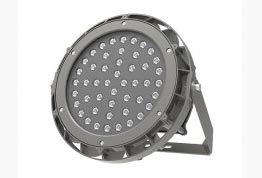
What are the disadvantages of LED flood lights?
Higher Initial Cost:
LED flood lights typically have a higher upfront cost compared to traditional lighting technologies such as incandescent or fluorescent bulbs. While the cost has been decreasing over time, it can still be a barrier for some consumers.
Temperature Sensitivity:
LED performance can be affected by temperature. Extreme heat or cold can reduce their lifespan and efficiency. However, advancements in LED technology have mitigated this issue to some extent.
Color Temperature and Quality:
Some LED flood lights may produce a cooler, bluish light that is less preferred in certain applications compared to the warm, yellowish light of traditional incandescent bulbs. However, this is more of a preference issue and can be addressed by selecting LED lights with the desired color temperature.
Directional Light Output:
While this can also be seen as an advantage in certain situations, LED flood lights tend to emit light in a more directional manner compared to traditional bulbs. This means that they may not spread light as evenly over a wide area without the use of additional optics or diffusers.
Potential for Glare:
LED flood lights, particularly those with higher brightness levels, can sometimes produce glare, which may cause discomfort or reduce visibility. Proper positioning and shielding can help mitigate this issue.
Compatibility Issues:
LED technology is evolving rapidly, and there can be compatibility issues with older infrastructure or existing lighting systems. It's important to ensure that LED flood lights are compatible with any existing fixtures or controls.
Complexity in Dimming:
While many LED flood lights are dimmable, the dimming process can be more complex compared to traditional bulbs. Compatibility issues with dimmer switches or flickering may arise if not properly addressed.
Despite these disadvantages, the overall benefits of LED flood lights often outweigh the drawbacks for many consumers and businesses, especially considering their energy efficiency and long-term cost savings.

